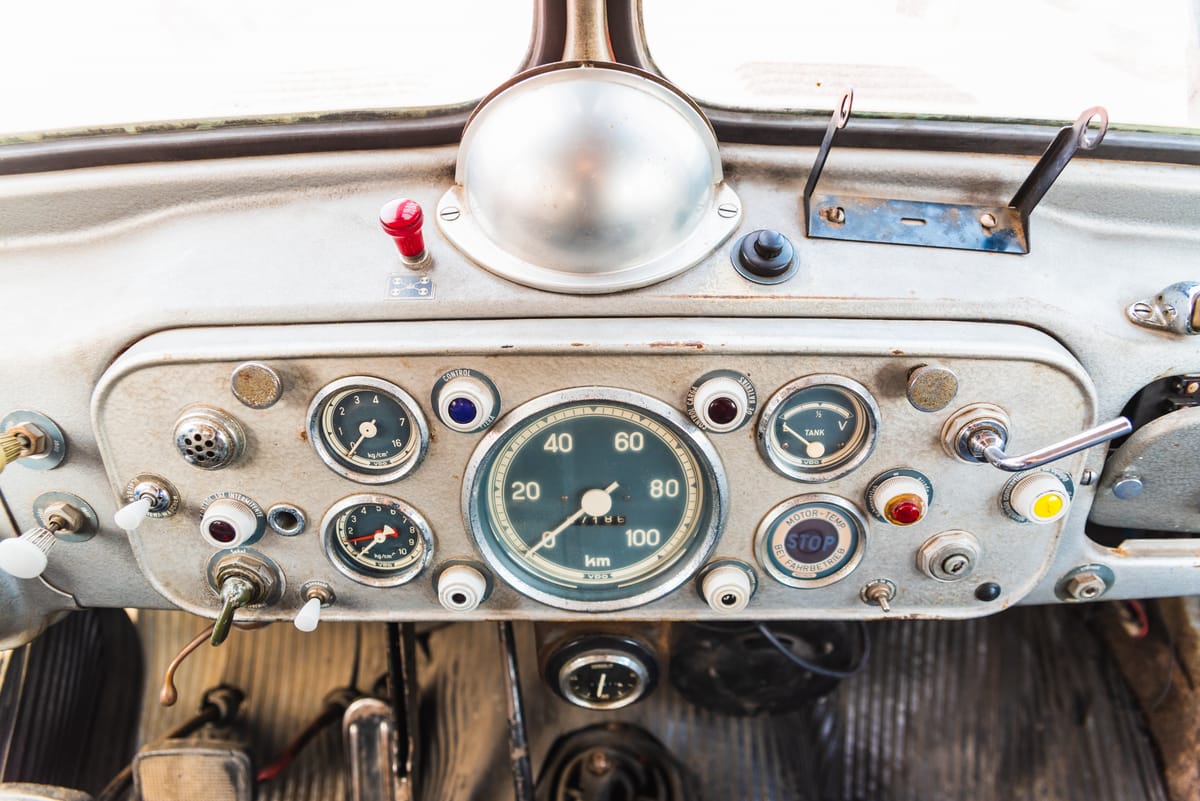Mileage vs. Age – Which Matters More in Kenya?

You’re scrolling through used car listings, your mind is buzzing. On one side, you see a 2018 Toyota Axio with 120,000 km on the clock. On the other hand, a pristine-looking 2014 model of the same car, but with only 50,000 km. The prices are almost the same. Utado? Which one will you buy?
This is the classic dilemma that every used car buyer in Kenya faces. It’s a debate as old as the automobile itself: what’s more important, a car’s age or its mileage? Do you go for the younger car that’s seen more of the country, or the older one that’s barely left its neighbourhood?
The short answer is, it’s complicated. Both numbers tell a crucial part of a car’s story, but neither tells the whole tale. The real secret is knowing how to read that story within the Kenyan context.
So, let’s break this down properly. By the end of this guide, you’ll know exactly what to look for beyond mileage and age.
Tuanze na Mileage – The Story of Wear and Tear
Mileage is the most common metric people use to judge a used car. It’s a direct measure of how much work the car has done. Think of it like the total distance Eliud Kipchoge has covered in his career.
What High Mileage Tells You:
High mileage indicates that the car’s moving parts have been in action for longer. These are the components that experience friction, heat, and stress every time the car is driven.
- Engine and Transmission: These are the heart and soul of the car. The more kilometres covered, the more cycles the pistons have completed, the more gear shifts the transmission has made. Key components like piston rings, bearings, and clutches have a finite lifespan directly related to use.
- Suspension and Brakes: Every kilometre on a Kenyan road is a test for a car’s suspension. Shock absorbers, coil springs, bushings, and ball joints are constantly working to smoothen out bumps. The higher the mileage, the more wear these parts have endured. The same goes for brake pads and discs.
- Wheel Bearings and Tyres: These are constantly rotating. A car with 150,000 km has had its wheels turn millions more times than one with 50,000 km, leading to eventual wear on the bearings.
The Kenyan Mileage Context
It's not just about the number, but the type of kilometres. 100,000 km clocked on the smooth Nairobi-Nakuru highway is far less stressful on a car than 100,000 km of stop-start-crawl in Nairobi’s CBD traffic. The latter involves constant braking, accelerating, and gear changes, putting immense strain on the engine and transmission.
A high-mileage car isn’t automatically a bad car. A well-maintained vehicle used for long-distance highway driving could be in much better mechanical shape than a low-mileage car that was exclusively used for short, stressful city trips.
The Case for Age: The Silent Killer of Car Components
Age might seem rosy and all, but it has its own way of taking a toll on a vehicle, even when it’s just sitting there. Time is a silent factor that affects all materials through degradation.
What Old Age Tells You:
A car is more than just its engine. It’s a complex assembly of metal, plastic, rubber, and electronics. These materials degrade over time, regardless of whether the car is moving.
- Rubber Degradation: This is the big one. Rubber hoses (for coolant, power steering, and brakes), seals, gaskets, and belts become brittle and crack over time due to exposure to heat cycles and the elements. A 10-year-old car, even with low mileage, is at a much higher risk of a burst hose or a leaky seal than a 4-year-old car.
- Plastic and Trim: The intense Kenyan sun sometimes haina huruma. Interior plastics on the dashboard and door panels can become brittle and crack. Exterior plastic trim can fade and warp. Headlight covers can become yellow and cloudy, reducing visibility at night.
- Fluid Contamination: Car fluids like engine oil, brake fluid, and coolant degrade over time. If a car sits for long periods without being driven, moisture can accumulate in these fluids, leading to internal corrosion and reduced performance. An older car that missed its regular fluid changes is a ticking time bomb.
- Electronic Gremlins: Modern cars are packed with electronics. Over time, solder joints can crack, and connectors can corrode, leading to frustrating and hard-to-diagnose electrical issues.
A low-mileage older car might look great on the surface, but it could be hiding a host of expensive problems caused by simple ageing. This is especially true if it sat idle for long periods, which is often worse for a car than being driven regularly.
The Sweet Spot is in Finding the Right Balance
So, if both age and mileage have their downsides, what’s the ideal scenario? The key is to stop looking at them as separate issues and start looking at them together. You need to find the balance.
The industry standard for average mileage is about 15,000 to 20,000 kilometres per year. You can use this as a simple benchmark:
Car's Total Mileage ÷ Car's Age in Years = Average Annual Mileage
Let’s go back to our initial example:
- The 2018 Toyota Axio (6 years old in 2024) with 120,000 km:
- 120,000 km ÷ 6 years = 20,000 km/year.
- Verdict: This is right within the average range. It suggests consistent, regular use.
- The 2014 Toyota Axio (10 years old in 2024) with 50,000 km:
- 50,000 km ÷ 10 years = 5,000 km/year.
- Verdict: This is extremely low. It’s a red flag. Why was it driven so little? Was it sitting unused for years, allowing seals to dry up and fluids to degrade? Or worse, has the odometer been tampered with?
The Golden Rule: A car that has been driven a consistent, average number of kilometres per year is often a safer bet than one at either extreme. It means the car was likely used as a daily driver, fluids were circulating, and it was probably serviced regularly.
What Really Matters Most: The Car's History and Condition
Ultimately, both mileage and age are just numbers. They are clues, not conclusions. The single most important factor when buying a used car in Kenya is its overall condition, which is a direct result of its maintenance history.
A 5-year-old car with 100,000 km that has a complete service history, received regular oil changes, and was cared for by its owner is infinitely better than a 10-year-old car with 50,000 km that was serviced at a jua kali garage "whenever there was a problem."
Here’s your ultimate checklist that goes beyond the numbers:
1. The All-Important Service History
This is the car’s report card. A stamped service book or a folder full of receipts is gold. It shows that the owner was diligent and proactive, not reactive.
It proves that crucial services like oil changes, timing belt replacements, and fluid flushes were done on time.
2. A Thorough Mechanical Inspection
This is non-negotiable. An independent, professional inspection can uncover issues that neither you nor the seller might be aware of.
A good mechanic will, among other things, check:
- Engine compression: To assess the health of the engine's core.
- Fluid quality: Looking for dirty oil or contaminated coolant.
- Suspension components: Checking for worn-out shocks and bushings.
- The underbody: Looking for rust or damage.
- Computer diagnostics: To scan for hidden error codes.
3. Check for Material Degradation
Use your own eyes and hands.
- Lift the bonnet: Look at the rubber hoses. Are they soft and flexible or hard and cracked?
- Check the seals: Inspect the rubber seals around the doors and windows. Are they perished?
- Examine the interior: Press on the dashboard. Does the plastic feel brittle? Check for sun damage.
- Tyres: Check the date code on the tyres. Old tyres are a safety hazard, regardless of tread depth.
4. The Test Drive
A test drive can reveal a lot about a car's mechanical state.
- Listen for strange noises from the engine or suspension.
- Feel how the transmission shifts. Is it smooth or jerky?
- Check if the car pulls to one side when you brake.
- Drive it at both low and high speeds if possible. Our guide on How to Test Drive a Used Car Like a Pro can help you here.
That Said: It's the Story, Not Mileage vs Age
So, which matters more – mileage or age? The definitive answer is: Neither.
The most important factor is the car's overall condition and its documented maintenance history.
A high-mileage newer car can be a fantastic, reliable vehicle if it has been meticulously maintained. An old, low-mileage car can be a money pit of hidden problems if it has been neglected.
The debate between mileage and age is a distraction from what truly counts. Instead of obsessing over one number, focus on getting the full picture. Look for evidence of care, demand a complete service history, and always, always get a professional inspection.
This is where the stress of car buying usually kicks in. How can you be sure you’re not missing something? That’s the problem we solve at Peach Cars. Every single car on our platform undergoes a rigorous 288-point inspection covering everything from the engine health to the condition of the rubber seals. We provide you with a transparent, detailed report so you know the car’s complete story. We filter out the guesswork, so you can choose your next car with total confidence.
Ready to find a car where the story makes sense? Browse our selection of inspected and well-maintained used cars on Peach Cars and buy with the peace of mind you deserve.




